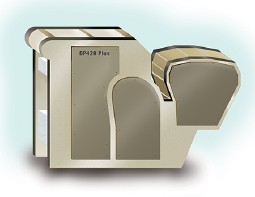More Tech Tips
- • Print Troubleshooting Tips for Adobe InDesign
- • Ditch the Typos with InDesign’s Dynamic Spellcheck Settings
- • Unlocking Design Flow Secrets: Expert Advice for Print Projects
- • Packaging Your Files for Print: 5 Simple Steps for Flawless Printing Results
- • 6 Tips for Creating an Impossible-to-Ignore Cover
- • A Perfect Landing Place
- • How to Rebrand Your Business in 7 Steps
- • Add Beauty and Balance Using the Golden Ratio and the Perfect Spiral
Ditch the Typos with InDesign’s Dynamic Spellcheck Settings
Adobe InDesign is considered by many to be the gold standard for print publishing – including layouts for magazines, posters, flyers, annual reports, and more.
With InDesign’s full palette of artistic tools at your fingertips, it’s easy to get lost in the creative process while preparing for print. But gorgeous full-color spreads can be marred by one dreaded element – that embarrassing typo.
InDesign offers several layers of editing support. Here’s what they are and how to use them.

Perfect Your Text with InDesign's Dynamic Spellcheck Settings
1. Basic Spellchecking
The first line of defense against typos is running a basic spell check.
- Select the Type tool.
- Choose Edit > Check Spelling > Spelling.
- InDesign will check your full document unless you alter the scope using the Search option. Select key text blocks or choose from All Documents, Document, Story, or To End of Story to prioritize sections for review.
- Press Done, then File > Save.
2. Spellcheck Editor Settings
Are unique or branded words being flagged as typos? You can choose to ignore them or add them to your lexicon as follows:
In the Not in Dictionary field, choose from these options:
Skip: Use this option to bypass one flagged word but check any repeats later in the document.
Change: To alter a word spelling ONE time, follow the prompts in the Change To box.
Ignore All: Select this prompt when you’re sure a problematic spelling works for the entire document.
3. Dynamic Spelling and Document-Specific Settings
Annoyed by an overactive spellchecker?
Tweak your Check Spelling settings by modifying the Find section tailored for Missed Words, Repeated Words, Uncapitalized Words, and Uncapitalized Sentences. Example: Deselect Misspelled Words if you’re designing a brochure with hundreds of names.

You can also enable Dynamic Spelling to instantly highlight errors or use autocorrect settings to fix typos or complete acronyms as you write. Here’s how to set up autocorrect:
- To see autocorrect options, choose Edit > Preferences > Autocorrect (Windows) or InDesign > Preferences > Autocorrect (macOS).
- If enabling autocorrect, select Add.
- Click OK to add the word, then OK to dismiss the Preferences dialog box.
- Use menu option Edit > Spelling > Autocorrect. When you type a space, period, comma, forward slash, or greater than/less than sign, the word will autocorrect after you type it.
- In the document text, enter this word followed by a space using the Type tool.
- Until the term you inserted is removed, choose Edit > Undo.
- Select File > Save.
To record modifications or allow multiple editors to propose and review adjustments, try the Story Editor feature and choose Type > Track Changes. Play around with tools like Seven Layer, Track Changes, Accept All Changes, or Dynamic Spelling.
Leave Nothing to Chance
After devoting hours to your masterpiece, don’t let simple errors take you down. Enable advanced editing features to ensure a flawless finish!


Adobe InDesign 2023 Beginner's Guide
by Ernest Woodruff
In this guide, users will learn about the Adobe InDesign workspace, what is new in Adobe InDesign, how to work with gradients, how to work with colors, how to work with layers, how to customize the workspace, and so much more. At the end of this guide, you will become a pro when navigating through the different Adobe InDesign features and functions.



Share this